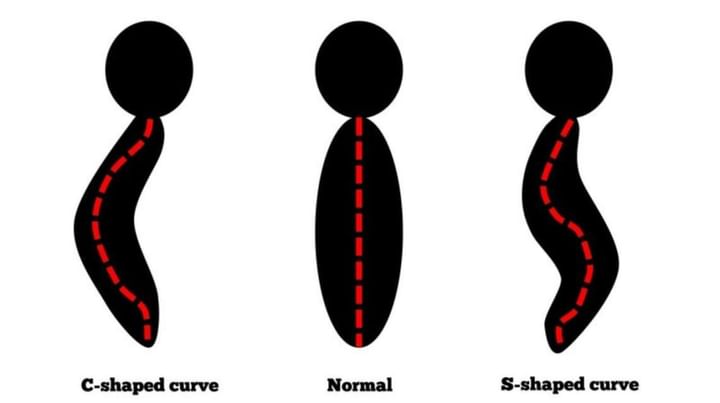Get the App
For Doctors
Login/Sign-up
Last Updated: Oct 23, 2019
BookMark
Report
A Sideways Twisted (Scoliotic) Spine Can Cause You Back Pain
Spinal scoliosis is a lateral ‘S’ shaped twist through the spine which is obvious when viewed from behind. It can be congenital abnormality or caused by a shorter leg. If the scoliotic curves are relatively stable and do not involve rotation of the vertebrae, the pathology will limit itself to segmental jamming.
- If however the spine twists as well as deviates laterally, the disorder will include facet joints trouble. The facets become chronically inflamed in their taxing role of locking the spinal segments together to prevent them toppling off on other.With scoliosis the curvature usually consists of a primary curve in the lower back and a secondary curve higher up the spine.
- The upper curve develops to compensate for the lower one, throwing the spine back across the central line so ahead sits squarely on the shoulders at the top of the column, allowing the eyes to focus.When one leg is shorter, the spine usually twists one way then the other, compensating in a fairly predictable way. For example, if your right leg is shorter and your pelvis dips to the right, your spine leans initially to the right, making a lateral sweeping curve, convex to the right.
- Higher up your spine there will be another lesser curve convex to the left, to tip the spine back the other way.Lateral curves in the spine lead to trouble because the ligamentous shoring of the sides of the column is so weak. Unlike the various structures which keep it stable in the forwards-backwards direction, there is little impediment to the segments sliding sideways off one another except the disc wall itself.
- The vertebrae below the apex of the curve tend to slide one way, and those above it, the other. Rather unfortunately, the vertebrae at the peak of the apex are pinched in the middle, compressing its intervertebral disc beneath it. As the travelling vertebrae move off-centre their discs are dragged sideways. Thus the disc at the apex of the curve is flattened and the neighboring ones are tugged in opposing directions. In all cases, the disc walls bunch down and the discs stiffen. Several contiguous discs end up thinner with their vertebrae sluggish-which explains why scoliotic spines can be so worrying, with such a diffuse spread of pain.
- The pain from the jammed apical segments is always the greatest. There may be several of them, depending how many times the spine twists back and forth as it goes up. These focal points account for the wide variety of symptoms which go with scoliosis. There can be pain in the neck(sometimes including headaches), in the shoulder blade area (sometimes down the arm), pain in the back beside the waist (sometimes referred to the groin), and pain in the low back (sometimes referred into the buttock or down the leg).
- With so much pain at once, mild scoliotic patients in particular are rarely taken seriously and often wrong dismissed as malingerers.Symptoms from exaggerated spinal curves (lordotic and kyphotic low backs) usually emerge during the third decade of life as the internal make-up of the tissues changes and they become more fibrous. Pain from scoliosis, on the other hand, can come on as early as nine or ten years old and be with you for life, getting progressively worse, unless you do something about it



+1.svg)
